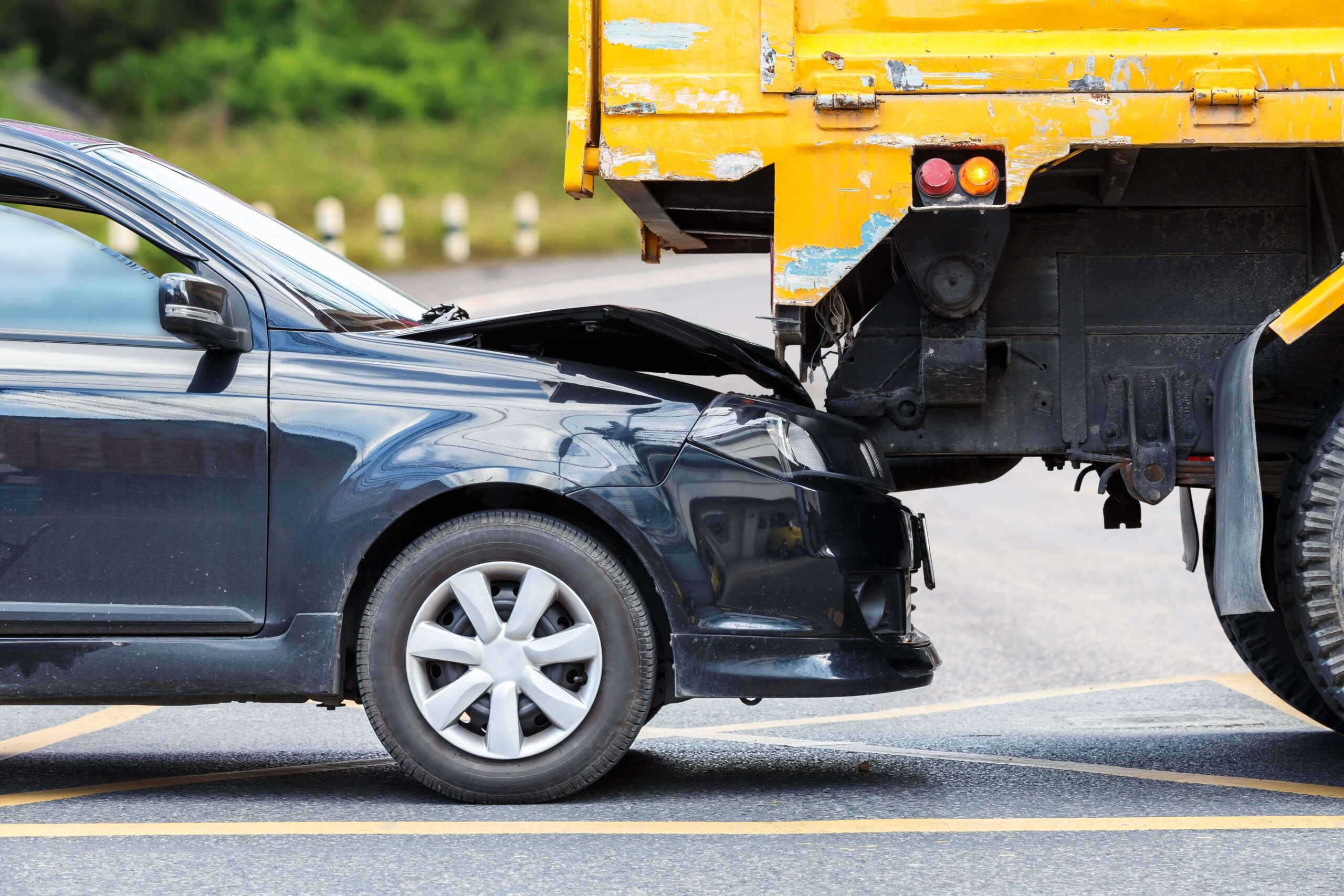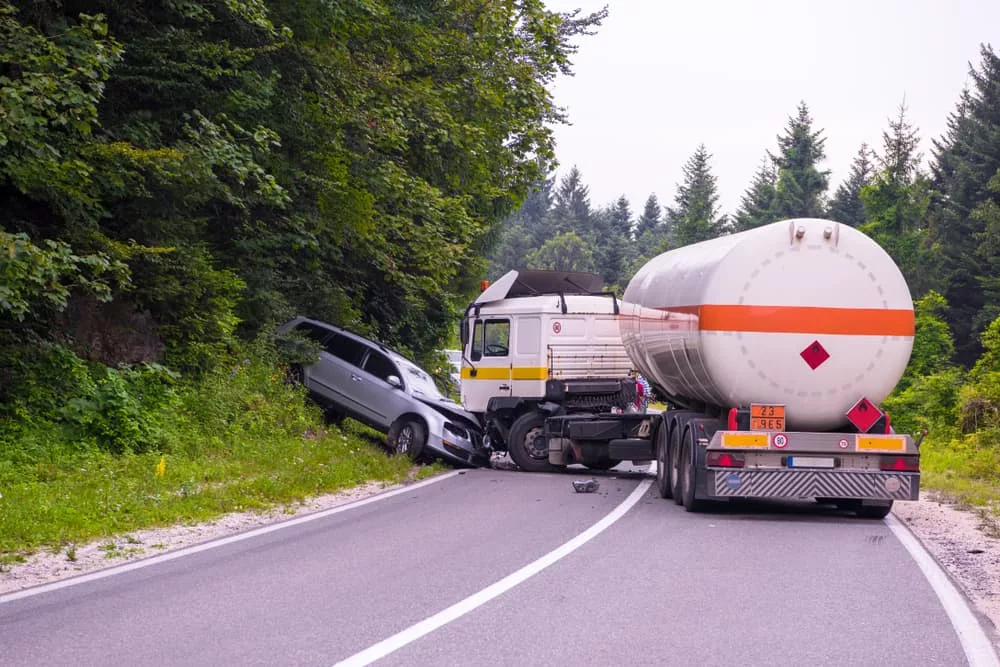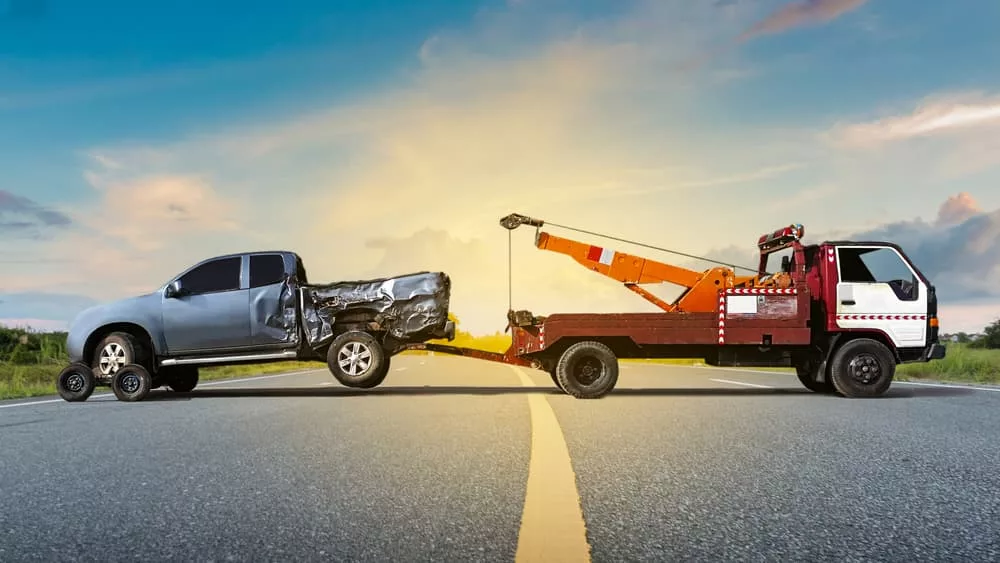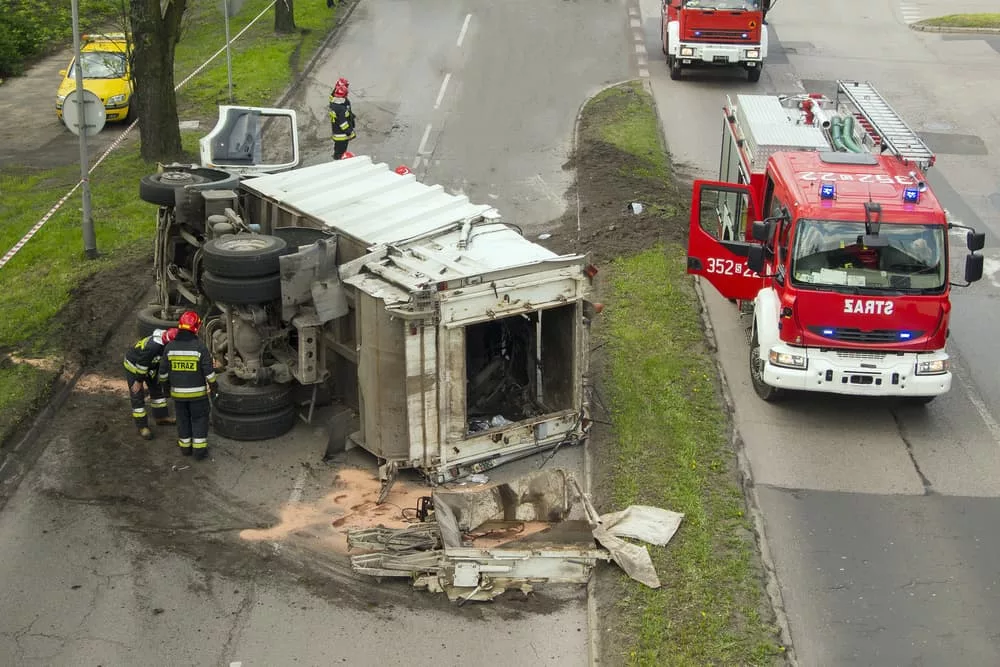Victims of truck accidents know all too well how much hurt and damage a semi-truck can cause in a collision. Truck accidents can happen in many ways, resulting in different areas of impact.
Rear-end collisions are some of the most common, often catching victims off guard and leaving them facing extensive physical harm and financial burden.
If you’re the victim of a rear-end trucking collision, do not hesitate to seek legal assistance from a skilled -accident attorney. A Rear-end truck accident lawyer can answer your questions, address your concerns, and offer quality representation to get you the justice and compensation you deserve.
Rear-End Truck Accidents are More Dangerous Than Other Types of Rear-End Collisions

Not all rear-end collisions are the same. A rear-end accident between two small vehicles will have different, and usually more devastating, results than one between a semi-truck and a vehicle.
First, it’s helpful to understand what a rear-end collision is. In a rear-end accident, the front of one vehicle collides with the back of another. A rear-end trucking accident typically means the front of the truck has collided with the back of a vehicle.
There are several reasons why rear-end truck accidents are more hazardous and harmful than others. Some of the more significant reasons are as follows.
Greater Impact and Damage
Truck drivers regularly drive quickly, especially when they have to reach their destination at a certain time. A semi-truck hitting a vehicle from behind can have destructive results.
Because of a truck’s sheer size and weight, a commercial truck accident can cause much more harm and damage than other, smaller vehicles. It’s not difficult for a truck to overtake a vehicle entirely, especially if the truck is traveling at higher than normal speeds at the time of impact.
Rear-end accidents can cause injury and property damage, but more so if the vehicle in the rear is a large truck.
Potential for Several Collisions
A rear-end truck collision has the potential to cause a chain reaction involving several victims.
When a truck collides with the back of another vehicle, it’s normal for the impact of the collision to cause that first car to run into other vehicles ahead of them. From there, it can cause a chain reaction, causing the next car to run into the rear of the one in front of them, and so on.
A multi-car pileup makes the situation more challenging. This usually means more victims, more injury, and more property damage, which can make it more difficult to obtain fair compensation for your losses.
Multiple Defendants
When a truck rear-ends another vehicle, the presumption of blame falls on the truck driver. While the truck driver may have some responsibility for the accident, they may not be entirely to blame.
For example, if the truck driver lost control over their vehicle because of brake failure, the party responsible for truck maintenance and repairs or the truck’s owner may also be at fault.
When your truck accident involves several defendants, your case can be harder to handle, as you may have to deal with multiple insurance companies. This is one of the most important reasons to have an experienced truck accident attorney take on your case.
Common Causes of Rear-End Semi-Truck Accidents
Rear-end collisions can happen for a variety of reasons. Sometimes, more than one factor contributes to your accident.
Determining the cause of your collision is often the first step. Once you understand what caused your accident, you’ll know who can be responsible for your injuries and related losses.
The following are just some of the more common causes of rear-end truck accidents.
Speeding
Speeding is a significant problem on roads. Drivers have different motivations for speeding, whether running behind schedule or experiencing road rage.
Some drivers just get into the habit of speeding, especially if they’ve done so on multiple occasions with no repercussions. Regardless of the motivation behind speeding, it’s dangerous to drivers and others on the road.
Truck drivers tend to speed regularly. Drivers often have strict timelines for delivering cargo, putting pressure on them and causing them to rush to reach their destinations.
Speed limits are not mere suggestions. There’s a reason why certain roads have specific speed limits, as driving at these speeds helps keep drivers safer. When truck drivers speed, there can be consequences.
Speeding can:
- Increase stopping time and distance
- Lead to greater impact in the event of a crash
- Cause drivers to lose control over their vehicles easier
- Reduce the effectiveness of vehicle safety equipment
Truck drivers are responsible for speeding, as they control their vehicles. However, trucking companies putting stress on their drivers highly contributes to drivers feeling the need to speed to stay on schedule without violating hours of service rules.
Tailgating
Tailgating is a common dangerous driving behavior. When drivers tailgate, they follow the vehicle in front of them too closely. Drivers tailgate for many reasons, including road rage, frustration with traffic, and impatience.
When a truck driver tailgates, they don’t leave enough room between themselves and the vehicle in front of their truck. The danger of this is heightened when they speed. When a driver tailgates, there is little to no room to stop in case of an emergency.
Because of their weight, large trucks already need more time and distance to stop. When truck drivers tailgate, it makes the situation riskier and heightens the likelihood of a rear-end collision.
Tailgating is so hazardous that many states have laws making it illegal. In several states, drivers break the law when they don’t allow reasonable enough room between their vehicle and the one ahead of them.
Distracted Driving
Drivers should always give all of their attention to the task at hand. This is especially true for truck drivers, as driving a truck requires special patience and skill.
“Distracted driving” is an umbrella term for anything that takes a driver’s eyes off the road, hands off the steering wheel, or mind off of driving. Different types of distractions exist, including manual, visual, and cognitive.
Manual distractions cause a driver to take one or both hands off the steering wheel. This includes eating, changing the radio station, or texting.
Visual distractions cause a driver to divert their eyes away from the road. Some of these distractions are also visual, like looking down at a cell phone or looking for something within the vehicle.
Cognitive distractions cause the driver to take their attention off of driving. Driving is often second nature to many drivers, making it easier to let their minds wander. These distractions commonly include daydreaming and having involved conversations with other passengers.
It can be easy for truck drivers to become distracted, especially with the long hours they spend on the road. Still, one quick distraction can have serious consequences.
Fatigued Driving
Driver fatigue is a significant issue for truck drivers. Federal trucking regulations address hours of service, providing strict rules against excessive working hours for truckers. Drivers can only drive a certain number of hours before they must take a break.
Unfortunately, not every driver or their employer respects these laws. Many drivers don’t get the rest they need to get to their destinations quicker, leaving them too tired to drive safely. Fatigue can have similar effects on the body as alcohol, impacting a driver’s ability to drive responsibly.
Driving Under the Influence
Driving under the influence of alcohol or drugs is illegal in every state. It’s nearly impossible for drivers to safely operate vehicles, as alcohol and substances negatively affect the body and natural reactions.
Drinking and driving can result in:
- Drowsiness
- Reduced reaction times
- Impaired vision
- Reduced concentration
- Risk-taking
Truck drivers often suffer from substance abuse issues. Loneliness and the need to stay awake to drive are just some of the reasons that result in alcohol and drug use for truck drivers. Alcohol and drug consumption often results in serious collisions, including rear-end accidents.
Mechanical Defect or Failure
Trucks are complicated machines – many things can go wrong at any time. From brake failure, steering issues, and other mechanical issues, these issues can make it more difficult for truck drivers to maintain total control over their vehicles.
If a truck driver experiences a sudden problem with their truck while on the road, it can be easier for them to lose control and cause a truck accident. In a situation like this, a driver may not have the ability to prevent a collision with other drivers.
Hazardous Road Conditions
Cities and other governmental entities are responsible for keeping roads safe and clear of any hazardous conditions. Irregular road maintenance and failure to fix issues can make it more dangerous for all drivers.
When a truck driver encounters a risky situation on the road, they may lose control of their truck and collide with others nearby. When this happens, truck drivers may only share some of the blame, if at all.
Injuries Common to Rear-End Truck Wrecks
Liability for Rear-End Collisions
Determining liability is key to pursuing compensation for your injuries and losses. As mentioned, it can be tricky to decipher who’s responsible for causing your accident in rear-end trucking accidents.
Some parties who might have caused your collision include:
- The truck driver
- The truck driver’s employer
- The trucking company
- The owner of the truck
- The owner of the cargo
- The entity responsible for truck maintenance and repairs
- The truck or truck part manufacturers or distributors
- The party responsible for loading cargo
- A governmental entity
In some cases, you can hold only one party, like the truck driver, responsible for your accident. In other cases, multiple parties may share the blame. When more than one party is at fault for your collision, you may have the opportunity to recover from each of them based on their percentage of fault.
Evidence to Help Establish Fault
Evidence helps determine who’s at fault and substantiates your claims.
Evidence that can assist with your claim includes:
- Witness statements
- Traffic cam footage
- Black box data
- Police reports
- Expert testimony
Proving the other party’s fault for your collision can be a challenge in and of itself. Your truck accident attorney must work diligently to prove how the other party’s negligent or intentional actions contributed to your rear-end collision. Certain irrefutable evidence and documentation can make establishing fault easier.
Collecting Damages for Rear-End Truck Accidents
Damages for truck accidents directly depend on your injuries and losses. A truck accident attorney must review the specifics of your collision-related monetary and non-monetary losses to come up with a dollar amount representing the value of your case.
The damages you may obtain include:
- Medical and rehabilitation costs
- Lost earnings
- Impact on your earning capacity
- Pain and suffering
- Disability
- Loss of enjoyment of life
Pursuing compensation after a truck accident may involve insurance claims and sometimes a truck accident lawsuit. A truck accident lawyer can determine the best way to seek financial recovery and provide representation throughout the process to obtain the best possible case result.

Time is Limited to Take Action After a Rear-End Truck Accident
After a truck accident, seeking legal representation as quickly as possible can help avoid forfeiting your right to fair financial recovery. Every state has limitations on the time plaintiffs have to file their legal claims. Failing to file your claim for compensation on time can have negative impacts.
A truck accident lawyer can handle your claim promptly and efficiently, helping to avoid the potential of possible case complications. Having an attorney on your side can give you the best chance of obtaining the beneficial case result you deserve after your trucking collision.
After a truck accident, don’t hesitate to consult a personal injury lawyer in Miami. Most reputable attorneys offer free consultations to discuss the details of your case, assess its merits, and provide valuable legal insights. This initial consultation helps you make informed decisions about pursuing a legal course of action.
Begin protecting your future by scheduling your free case evaluation today.




